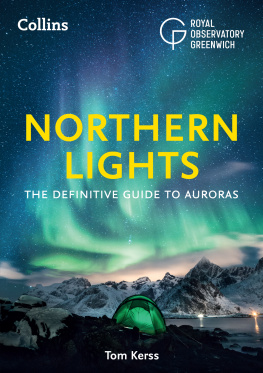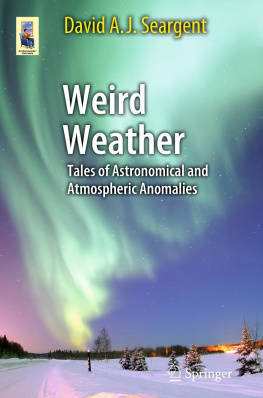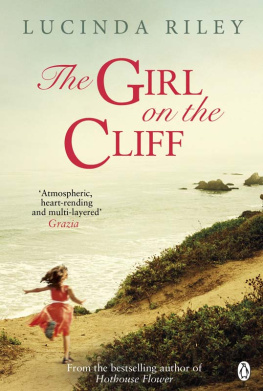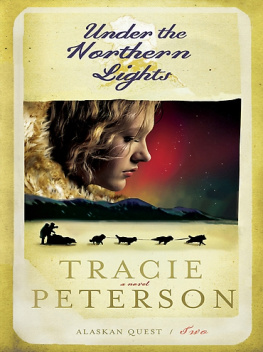
Published in 2021 by The Rosen Publishing Group, Inc. 29 East 21st Street, New York, NY 10010 Copyright 2021 by The Rosen Publishing Group, Inc. All rights reserved. No part of this book may be reproduced in any form without permission in writing from the publisher, except by a reviewer. First Edition Portions of this work were originally authored by Kristen Rajczak and published as The Northern Lights . All new material in this edition authored by Seth Kingston.
Editor: Elizabeth Krajnik Book Design: Reann Nye Photo Credits: Cover krissanapongw/iStock/Getty Images Plus/Getty Images; series art Zoteva/ Shutterstock.com; series art Abstractor/Shutterstock.com; p. 5 Marc Marchal/500px Prime/Getty Images; p. 6 V. Grazyna Wilk-Scott/500px/Getty Images; p. 7 Mondadori Portfolio/Getty Images; p. 9, 14 Simons passion 4 Travel/Shutterstock.com; p. 11 VW Pics/Universal Images Group/Getty Images; p. 13 Courtsey of NASA; p. 15 MikeDrago.cz/Shutterstock.com; p. 16 Petri jauhiainen/Shutterstock.com; p. 17 NASA/Getty Images News/Getty Images; p. 19 iStockphoto.com/ chemc; p. 21 (top) MAGNIFIER/Shutterstock.com; p. 21 (bottom) Denis Belitsky/Shutterstock.com; p. 22 Noppawat Tom Charoensinphon/Moment/Getty Images. 22 Noppawat Tom Charoensinphon/Moment/Getty Images.
Cataloging-in-Publication Data Names: Kingston, Seth. Title: Northern lights / Seth Kingston. Description: New York : PowerKids Press, 2021. | Series: Lighting up the sky| Includes glossary and index. Identifiers: ISBN 9781725318618 (pbk.) | ISBN 9781725318632 (library bound) | ISBN 9781725318625 (6 pack) Subjects: LCSH: Auroras--Juvenile literature. Classification: LCC QC971.4 K56 2021 | DDC 538.768--dc23 Manufactured in the United States of America Some of the images in this book illustrate individuals who are models.
The depictions do not imply actual situations or events. CPSIA Compliance Information: Batch # CSPK20 . For Further Information contact Rosen Publishing, New York, New York at 1-800-237-9932.


Imagine youre in Alaska. Its December and youre outside getting wood to keep the fire going inside the fireplace. You look up and see yellow, green, blue, and purple lights dancing in the sky.
This phenomenon, or event, is called an aurora. Auroras were named after Aurora, the Roman goddess of dawn . The most famous auroras are called the aurora borealis, or northern lights. Borealis comes from the Greek god of the north wind, Boreas. Aurora borealis means northern dawn in Latin. Read on to learn more about the northern lights!

The northern lights have fascinated, or greatly interested, people for thousands of years.
Its easy to see why!

The northern lights first got the name aurora borealis around 1620 when scientists Galileo Galilei and Pierre Gassendi wrote about them. Galileo thought auroras came from sunlight reflecting in Earths atmosphere . As early as 2010, people in Canada began seeing a new type of aurora, which they named STEVE. STEVE is a dim purple and green ribbon in the sky. However, STEVE isnt actually an aurora.

In 1790, Henry Cavendish discovered that the auroral light forms about 62 miles (100 km) above Earths surface.
In 1903, Kristian Birkeland discovered that electricity flowing through the gas of Earths upper atmosphere causes the light we see as auroras. In the 1950s, scientists used special rockets to collect knowledge about auroras. Today, we know that charged particles from the sun cause auroras. Around 1895, Kristian Birkeland, shown here, discovered that electrons meeting Earths magnetic field cause auroras.

The sun gives off light, heat, and small particles that travel in solar wind, which are winds the sun produces. Solar winds reach Earth in about 40 hours, where they meet Earths magnetic field and atmosphere.
Earths invisible magnetic field pushes some of the energy and particles away. However, the magnetic field pushes some energy and particles toward Earths poles.

When particles reach the poles, they meet oxygen and nitrogen atoms in Earths upper atmosphere. Electrons and protons in the solar wind knock away electrons from the oxygen and nitrogen atoms, leaving behind energized ions , which give off light energy we see as colorful auroras. Earths magnetic field creates a shield to keep harmful particles from reaching Earths surface.

The most common color of aurora is yellow-green.

The most common color of aurora is yellow-green.
However, auroras can be red, pink, blue, or purple. The auroras color depends on which gas atoms the particles from the solar wind meet and how high in the atmosphere the particles and atoms meet. The yellow-green color most people think of when they imagine an aurora is due to oxygen atoms about 60 miles (97 km) above Earths surface. However, oxygen atoms at about 200 miles (322 km) above Earths surface produce red auroras. Nitrogen causes blue or purple lights. Oxygen and nitrogen also give off ultraviolet light, which can only be seen with special cameras on spacecraft.
An auroras color also depends on what type of collision, or crash, occurs between the particles in the solar wind and the atoms or molecules in the atmosphere. Atomic nitrogen produces blue, while molecular nitrogen produces purple.

This aurora over Grasslands National Park in Saskatchewan, Canada, has many colors. Which atoms or molecules do you think produced these colors?

Auroras come in many different shapes. In fact, no two auroras look alike. Depending on where the observer is standing, an aurora may look like a curtain or form a corona, or crown.
Some auroras seem to be static, or fixed, in the sky, while others move like dancing ribbons. Over time, auroras can change shape and brightness. Auroras form ovals above Earths magnetic poles. The parts of Earth under these ovals are called the auroral zones. Auroral zones move toward the poles during low solar activity and reach farther toward the equator during periods of high solar activity.










 Published in 2021 by The Rosen Publishing Group, Inc. 29 East 21st Street, New York, NY 10010 Copyright 2021 by The Rosen Publishing Group, Inc. All rights reserved. No part of this book may be reproduced in any form without permission in writing from the publisher, except by a reviewer. First Edition Portions of this work were originally authored by Kristen Rajczak and published as The Northern Lights . All new material in this edition authored by Seth Kingston.
Published in 2021 by The Rosen Publishing Group, Inc. 29 East 21st Street, New York, NY 10010 Copyright 2021 by The Rosen Publishing Group, Inc. All rights reserved. No part of this book may be reproduced in any form without permission in writing from the publisher, except by a reviewer. First Edition Portions of this work were originally authored by Kristen Rajczak and published as The Northern Lights . All new material in this edition authored by Seth Kingston. 
 Imagine youre in Alaska. Its December and youre outside getting wood to keep the fire going inside the fireplace. You look up and see yellow, green, blue, and purple lights dancing in the sky.
Imagine youre in Alaska. Its December and youre outside getting wood to keep the fire going inside the fireplace. You look up and see yellow, green, blue, and purple lights dancing in the sky.  The northern lights have fascinated, or greatly interested, people for thousands of years.
The northern lights have fascinated, or greatly interested, people for thousands of years.  The northern lights first got the name aurora borealis around 1620 when scientists Galileo Galilei and Pierre Gassendi wrote about them. Galileo thought auroras came from sunlight reflecting in Earths atmosphere . As early as 2010, people in Canada began seeing a new type of aurora, which they named STEVE. STEVE is a dim purple and green ribbon in the sky. However, STEVE isnt actually an aurora.
The northern lights first got the name aurora borealis around 1620 when scientists Galileo Galilei and Pierre Gassendi wrote about them. Galileo thought auroras came from sunlight reflecting in Earths atmosphere . As early as 2010, people in Canada began seeing a new type of aurora, which they named STEVE. STEVE is a dim purple and green ribbon in the sky. However, STEVE isnt actually an aurora.  In 1790, Henry Cavendish discovered that the auroral light forms about 62 miles (100 km) above Earths surface.
In 1790, Henry Cavendish discovered that the auroral light forms about 62 miles (100 km) above Earths surface.  The sun gives off light, heat, and small particles that travel in solar wind, which are winds the sun produces. Solar winds reach Earth in about 40 hours, where they meet Earths magnetic field and atmosphere.
The sun gives off light, heat, and small particles that travel in solar wind, which are winds the sun produces. Solar winds reach Earth in about 40 hours, where they meet Earths magnetic field and atmosphere.  When particles reach the poles, they meet oxygen and nitrogen atoms in Earths upper atmosphere. Electrons and protons in the solar wind knock away electrons from the oxygen and nitrogen atoms, leaving behind energized ions , which give off light energy we see as colorful auroras. Earths magnetic field creates a shield to keep harmful particles from reaching Earths surface.
When particles reach the poles, they meet oxygen and nitrogen atoms in Earths upper atmosphere. Electrons and protons in the solar wind knock away electrons from the oxygen and nitrogen atoms, leaving behind energized ions , which give off light energy we see as colorful auroras. Earths magnetic field creates a shield to keep harmful particles from reaching Earths surface.  The most common color of aurora is yellow-green.
The most common color of aurora is yellow-green.  This aurora over Grasslands National Park in Saskatchewan, Canada, has many colors. Which atoms or molecules do you think produced these colors?
This aurora over Grasslands National Park in Saskatchewan, Canada, has many colors. Which atoms or molecules do you think produced these colors?  Auroras come in many different shapes. In fact, no two auroras look alike. Depending on where the observer is standing, an aurora may look like a curtain or form a corona, or crown.
Auroras come in many different shapes. In fact, no two auroras look alike. Depending on where the observer is standing, an aurora may look like a curtain or form a corona, or crown.